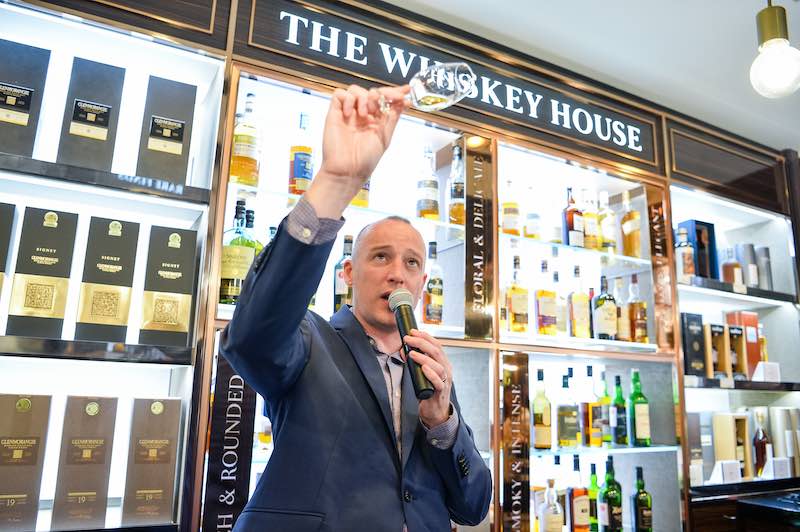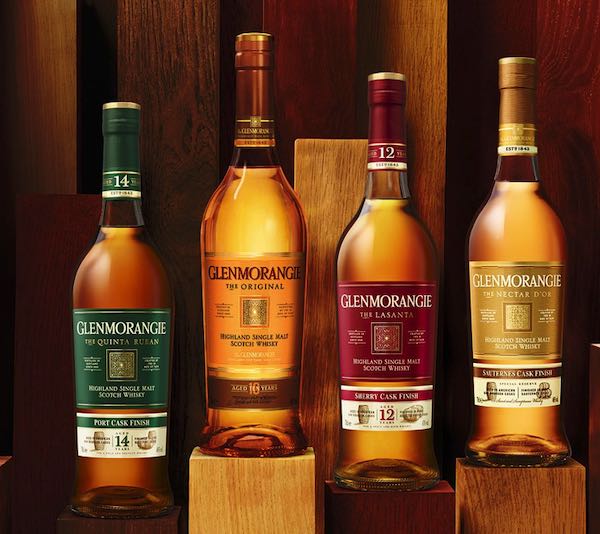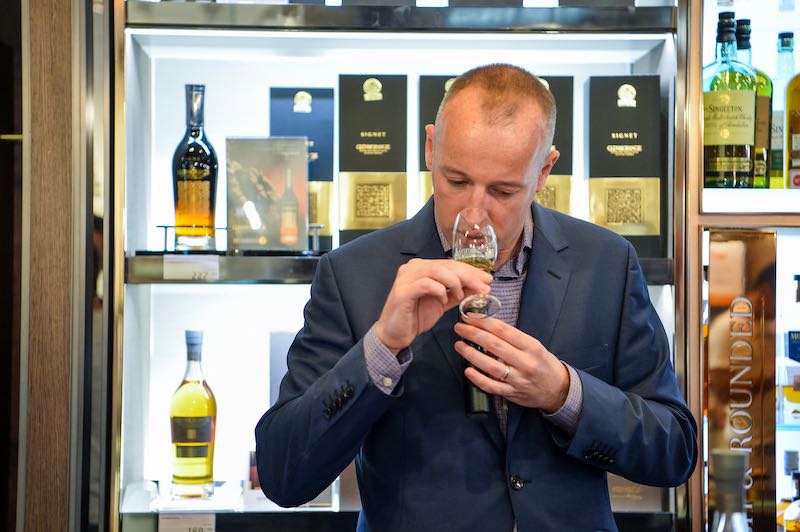Laphroaig Distillery – The Controversial Islay
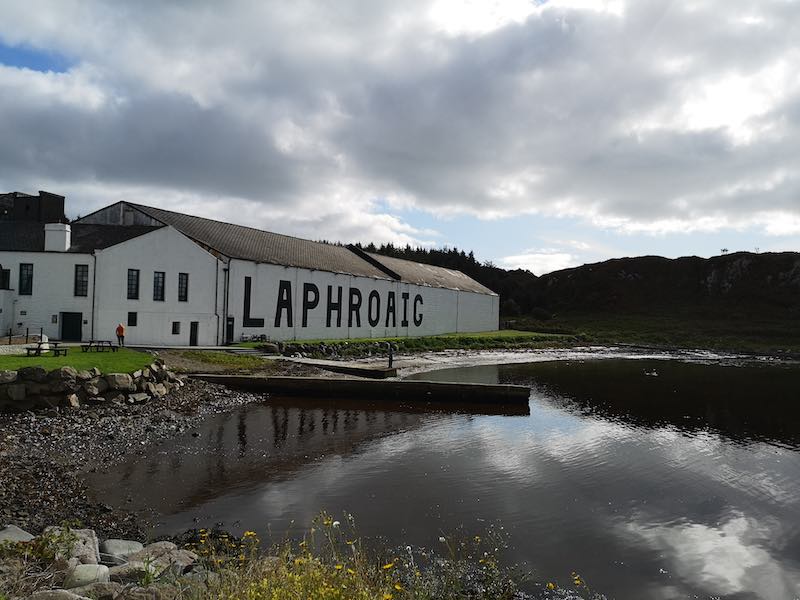
Laphroaig Distillery
Laphroaig distillery is home to the world-famous whisky of the same name. It is a whisky that causes heated debates over how it tasted, and can seriously make one person look demented in the eyes of another. However controversial the whisky may appear to taste, Laphroaig distillery is a place that excites whisky drinkers all over the world.
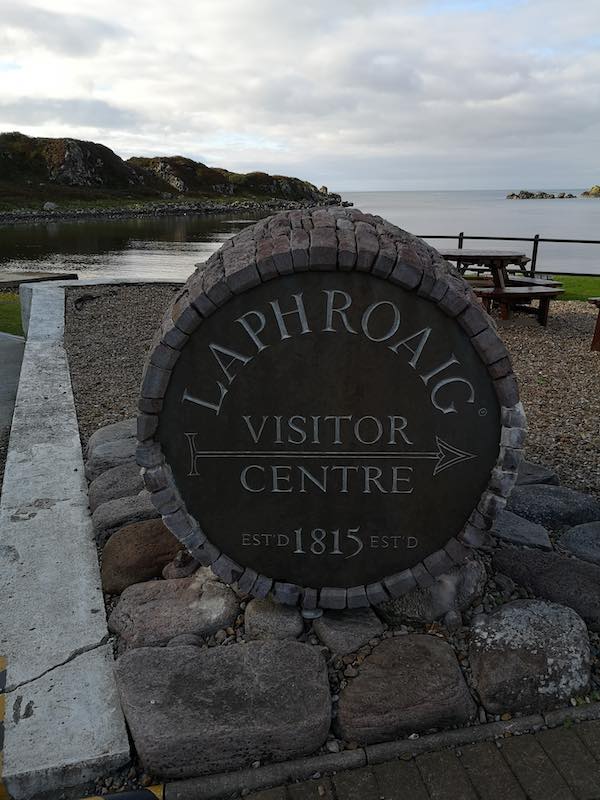
Entrance to Laphroaig Visitor Centre
We visited Laphroaig Distillery on a sunny morning for a tour and tasting. Having a driver who used to work at Laphroaig Distillery as a Stillman made it extra special for us as our dear driver introduced us to everyone at the visitor centre! We arrived earlier than expected, and excitedly, try to explore the little museum located at the visitor centre. It is a small area detailing the history of Laphroaig, as well as providing some explanation to what peat is.
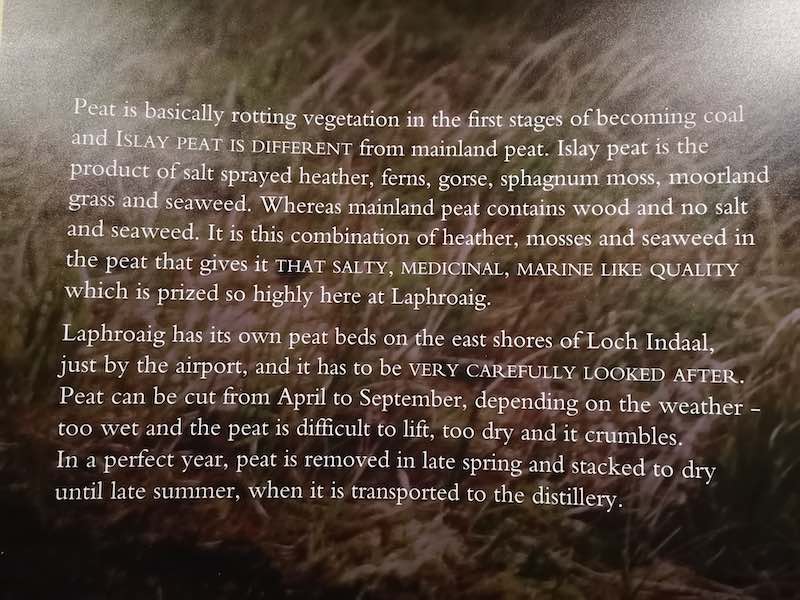
Peat Explained
Laphroaig Distillery Tour
After going through the museum, we met our tour guide for the day and started our tour.
Step 1: Malting Floor
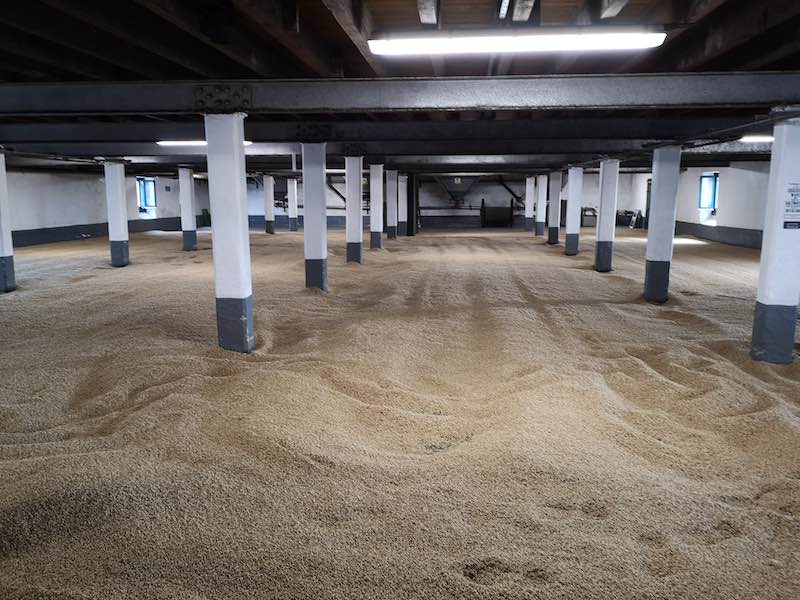
Malting Floor
Laphroaig malts some of their barley at the distillery and buys the rest of them from Port Ellen Malting. The first step of malting barley is naturally seeping them in water. Barley seeped in water for roughly 48 hours. The time depends on the temperature and how fast the barley reacts as the barley needs to get a moisture content of 45% before they are used in the next step.
The team at the malting hall changes the water regularly to keep the water fresh. Draining the water also helps to allow the barley to breathe before refilling it to continue the seeping process. Once the barley is ready, they will be spread onto the floor. The ideal temperature during the germination is about 18 degrees C to make sure that the barley is ready for the kiln. However, due to weather changes, the distillery needs to monitor the temperature carefully and make changes when necessary. In cold weather, the team keeps the barley warm by closing the windows; in hot weather, the windows are opened to keep the barley cool and well-ventilated.
During germination, the team works hard to keep the barley fresh by turning them regularly. The process helps to ventilate the barley and prevent them from sticking to one another. It also allows the barley to breathe and germinate properly. During the tour, the guide allowed everyone to help turn the barley using a shovel that they kept to the malting floor. We were very excited to try that as it would be the first time that we get to do it!
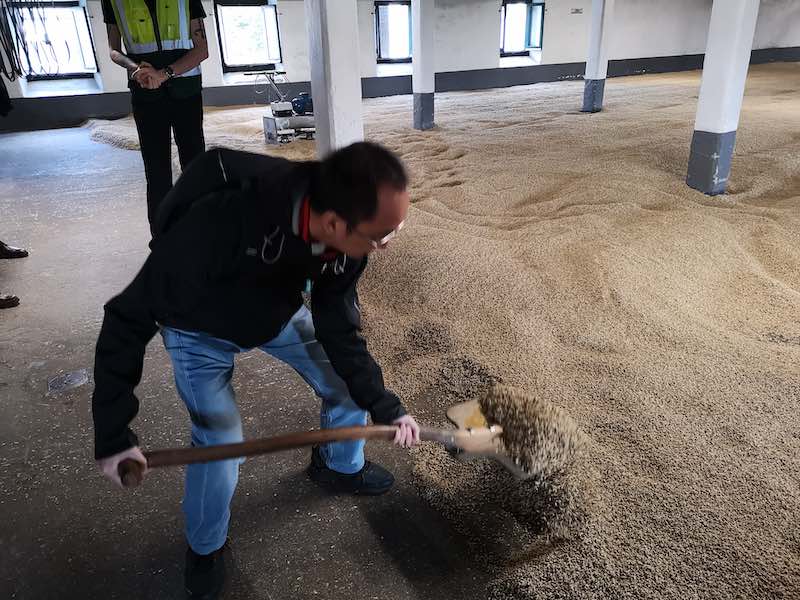
Turning the Barley!
Here we were! Holding the shovel for the first time, and scooping barley in the attempt to turn it! It was great fun, honestly, with every one of us making a pose for pictures and videos! The barley germinates better with the regular turning, and soon, it would be ready for milling before moving on to the next step.
Step 2: The Kiln and Smoking
The germinated barley needs to be dried to stop the growth and make it useful for whisky-making. Maltsers transferred the barley to the kiln when it is ready. The kiln is responsible for both the smoking and drying of the barley. They do the two processes separately. Smoking using peat takes about 12 hours while the drying time depends on the moisture content. The team needs to dry the barley down to 2% moisture.
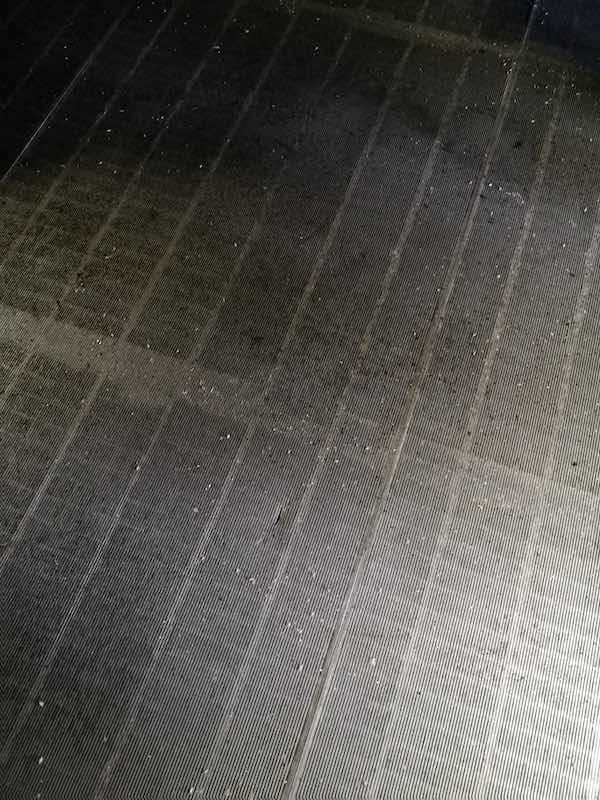
The place the barley rest on
To smoke and dry the barley, the team sends the barley to this “resting floor” above the kiln. The guide took us in to take a look and also to have a feel of getting smoked! The germinated barley gets spread out on the floor before they lit the fire below for the smoking and drying process.

The Kiln
This is the kiln at Laphroaig. As it was one of the slower periods in whisky-making, we got a chance to see the kiln when it was not in use. The team will pile peat into the kiln, light it up, and the smoke that rises will reach the floor above where the barley lies. As mentioned earlier, the smoking process takes 12 hours. After that, drying takes place. As mentioned earlier, the distillery takes part of its malted barley from Port Ellen Malting. We understood from our guide that the malt from Port Ellen is around 40-45ppm while the malts from Laphroaig is around 50-55ppm. To achieve an average, the distillery mixes the two malts to get a good balance.
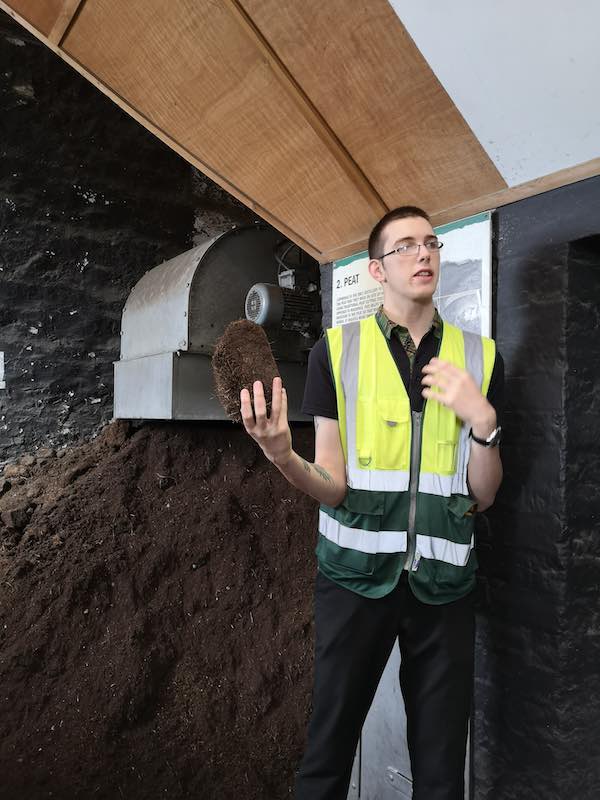
Peat Lesson
An Aside: Peat at Laphroaig
Our knowledgeable guide also worked us through a lesson on peat on Islay as well, explaining how Laphroaig cuts its peat.
We learned that peat location plays a big part in the kind of peat smoke the distillery wanted. Islay peat is the product of salt-sprayed heather, ferns, gorse, sphagnum moss, moorland grass and seaweed. The combination gives Laphroaig its signature salty, medicinal and coastal notes that creates controversial reactions all over the world. The distillery owns peat beds on the east shores of Loch Indaal, near to the Islay airport. The team looks after the peat beds, making sure that they are in the right conditions for the cutting which is usually done between April to September every year.
Laphroaig distillery is the last distillery on Islay that is still hand-cutting its peat. Usually, hand-cut peat is wet enough to make lots of smoke, which is perfect for Laphroaig.
Step 3: Mashing and Fermentation
We moved on to the mash house, where our guide treated us to more information about the whisky-making process. The mash tun gets three lots of water to extract the sugar from the malted barley. The first lot of water is at 63 degrees C; the second lot at 80 degrees C, and the last lot at 90 degrees C. The first and second lot of water move to the washbacks, while the last lot of water goes back to the mash tun as the first lot of water for the next mash. The sugary liquid, or wort, then cools to about 19 degrees C and moves to the stainless steel washbacks.
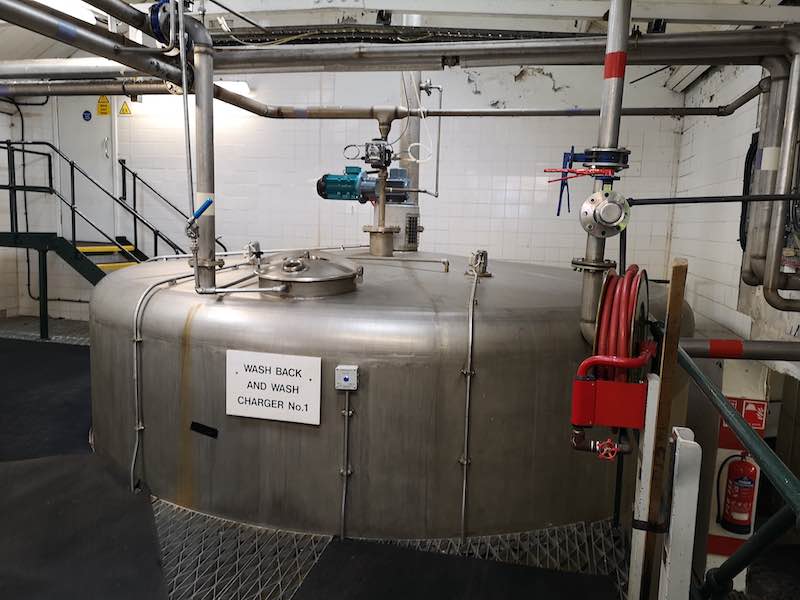
Washback
Laphroaig used liquid yeast, and the team adds it to the wort in the washback. Fermentation happens, and it yields a low wine (beer) at roughly 8.5% abv. Again, we were excited when our guides offered to let us taste the low wine!
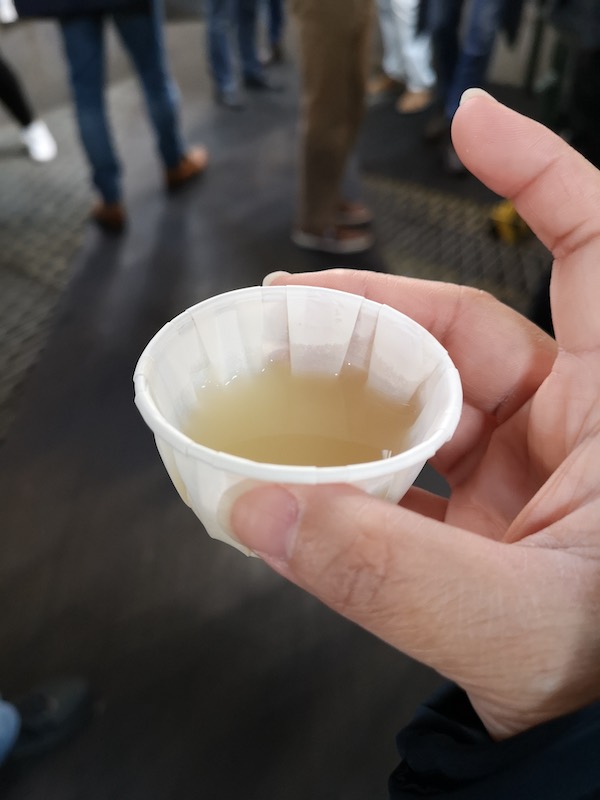
My cup of Laphroaig “beer.”
Laphroaig also makes excellent “beer”! It is slightly peaty and smokey, coupled with plenty of sweetness. In my opinion, it tasted even better than the one we had at Kilchoman! Considering that I dislike Laphroaig, I believe I would instead drink its beer (if the distillery ever decides to release one)!
Step Four: Distillation
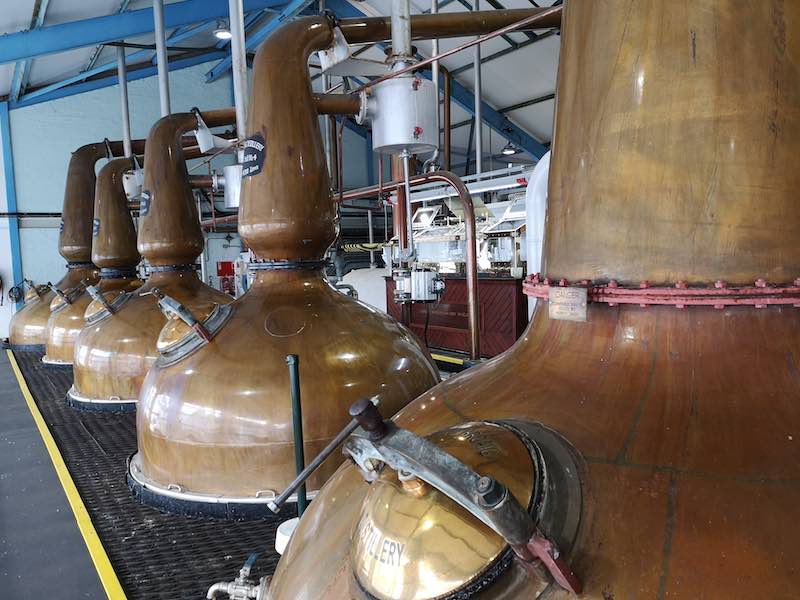
Spirits Still (four in the back); Wash Still (in the foreground)
Our group trotted to the Still House like a bunch of eager children who had been promised chocolates. Once there, we wowed over the seven stills standing proudly in front of us. There are three wash stills and four spirits stills. Each wash still holds 10,400 litres, while the spirits stills vary in their volume.
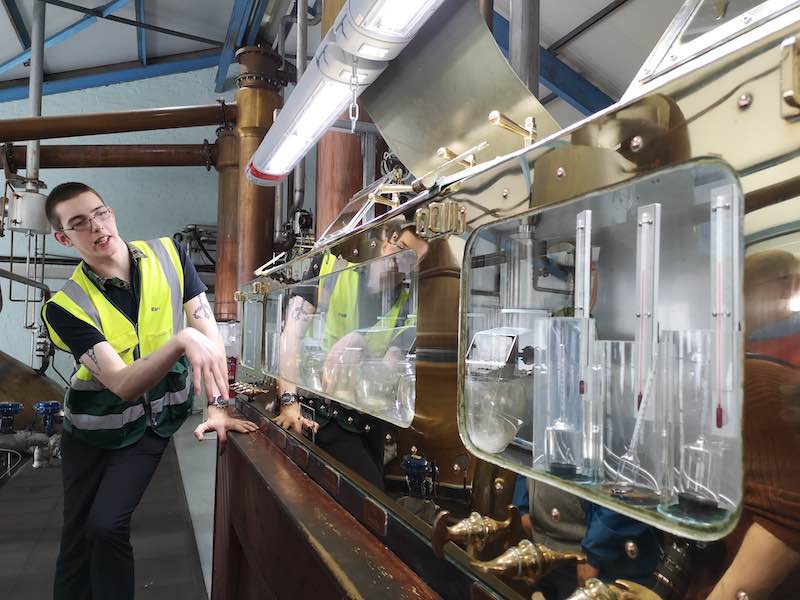
Spirit Safe
The first distillation through the wash still increases the alcohol percentage from 8.5% abv to around 20-25% abv. The lyne arms slope upwards to get more reflux, which helps to increase the strength of the distilled spirit. The second distillation goes through the spirits stills and alcohol percentage goes up to above 80% abv. Laphroaig takes the cut of the heart between 78% to 62%.
Step Five: Maturation
Whisky cannot be whisky if it is not matured for a minimum of three years in Scotland. We headed off to the warehouse once we completed the still house tour.

Laphroaig Warehouse
A quick look at the warehouse showed rows and rows of casks lying in the dark and moist environment, waiting for their turn to shine as whisky in a prized bottle. As our tour was a cask strength whisky-tasting tour, we knew what laid ahead.
The Best Treat at Laphroaig
Our guide finally bought us to a low-lying warehouse where we see three casks waiting for us. Our group sat down and waited with bated breath as our guide explained the procedure of tasting the three cask-strength whiskies and how we should bottle our favourite into the glass bottles provided. The three casks consisted of a bourbon barrel, a Manzanilla Sherry butt and a Fino Sherry butt.
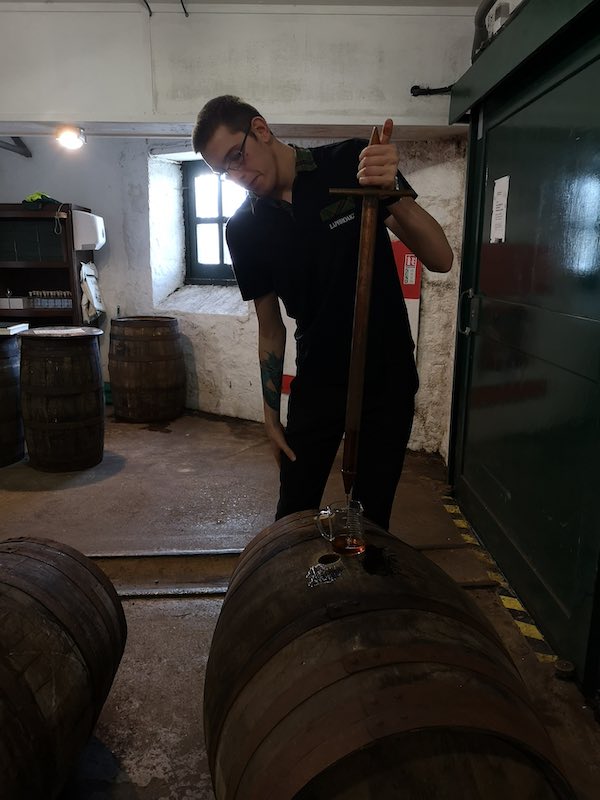
Our guide showing us how to draw whisky from the cask
We were all given a taste of the three casks, and then our guide waited for us to decide on the whisky that we wanted to bottle. Some of the participants rushed to the casks, but we took some time to decide. Our final choices were the bourbon barrel and the Manzanilla Sherry butt.
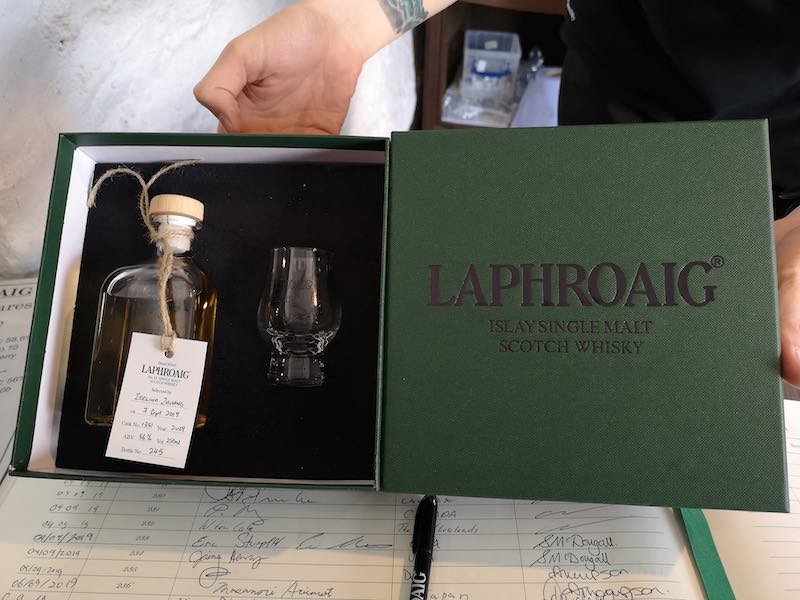
The Final Look
Bottling took longer than expected due to the crowd in our group, but we finally got our hands on the finished products! The above picture showed my bottle nicely sitting inside a beautiful package. Sadly, the box did not survive the flight back, and we had to throw it away in Edinburgh. Nonetheless, the bottle and the glass survived!
Friends of Laphroaig
Back at the visitor centre, we claimed our rental for the plot of land that we “own” on Laphroaig’s peat bed. While we did not have time to visit our little plot, it was good to get our rental “payment” of it.
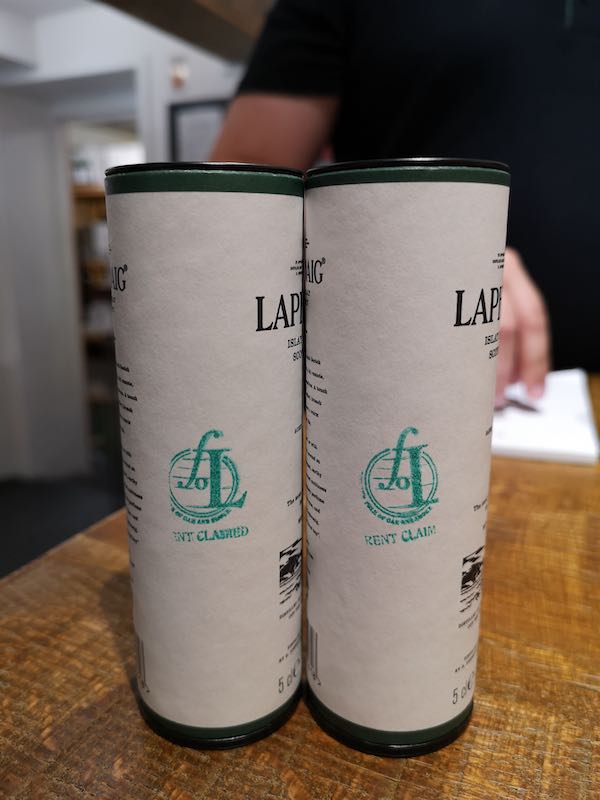
Our rental payment
If you are a friend of Laphroaig, remember to claim your rent at the visitor centre when you visit the distillery. It is available once a year and if you are lucky to visit them every year, claim it! We moved on to the next distillery soon after our tour as we were on a tight schedule, but Laphroaig distillery truly gave me one of the best distillery tours on Islay.

